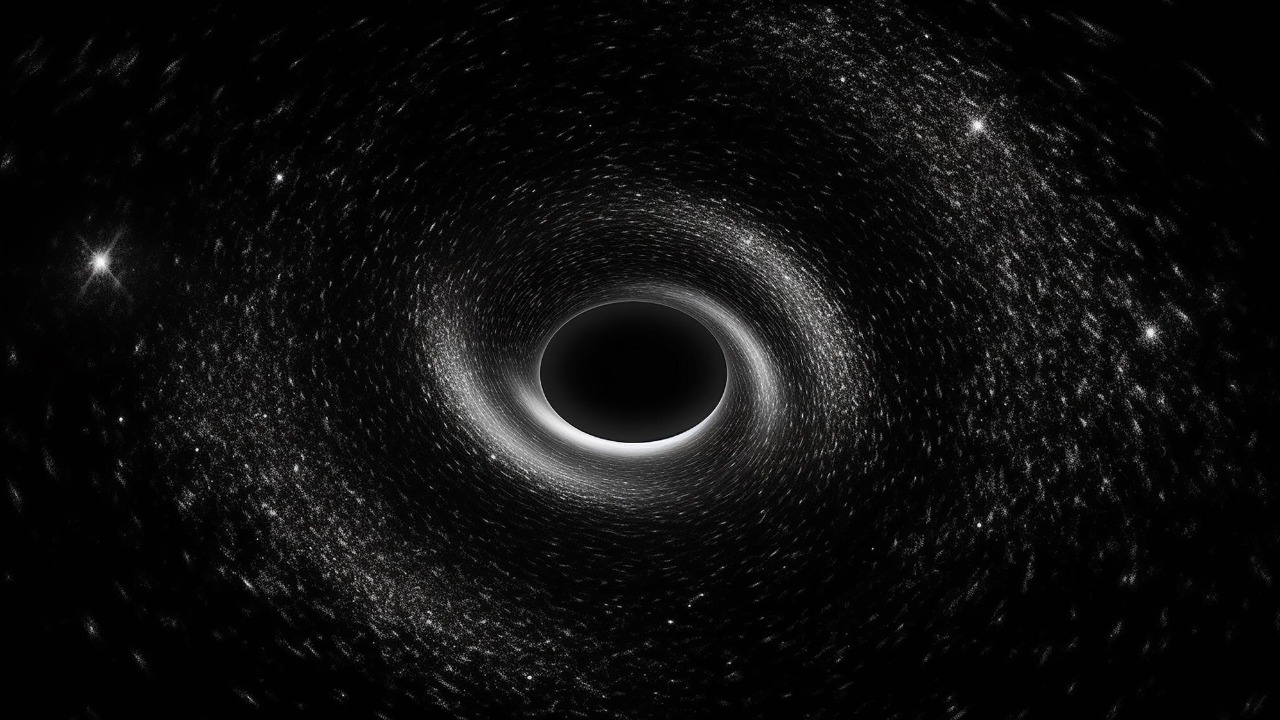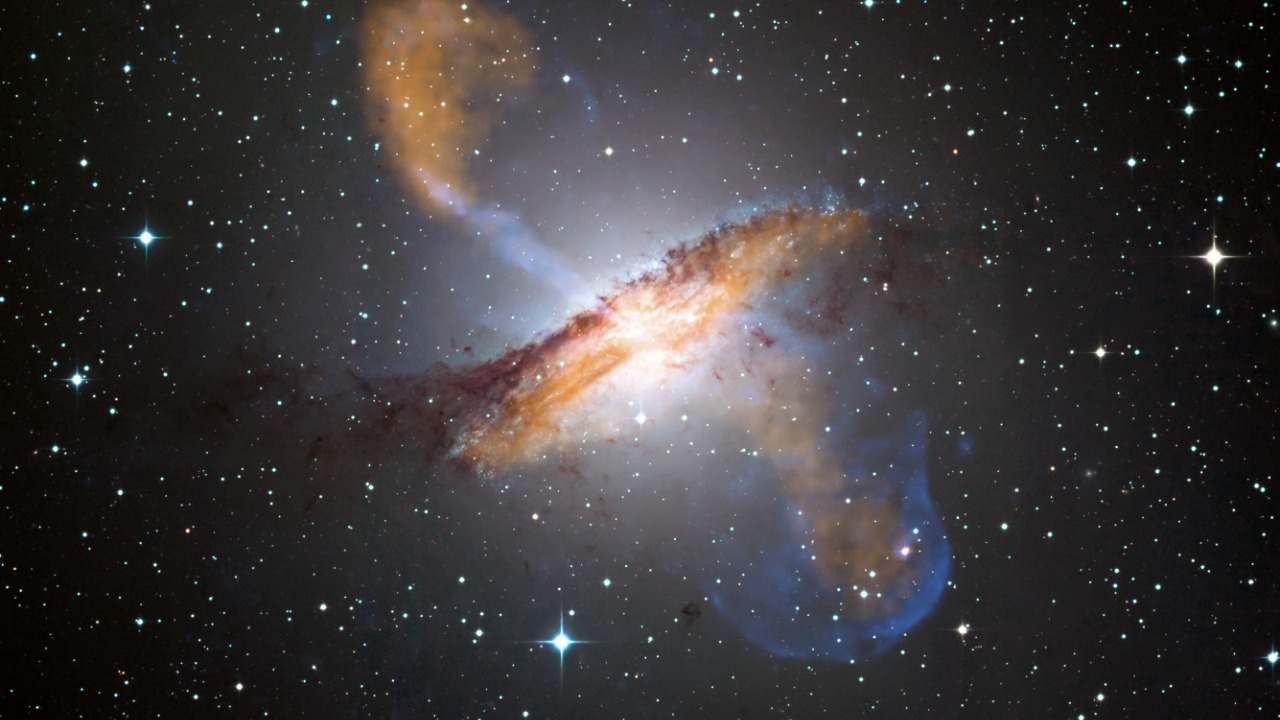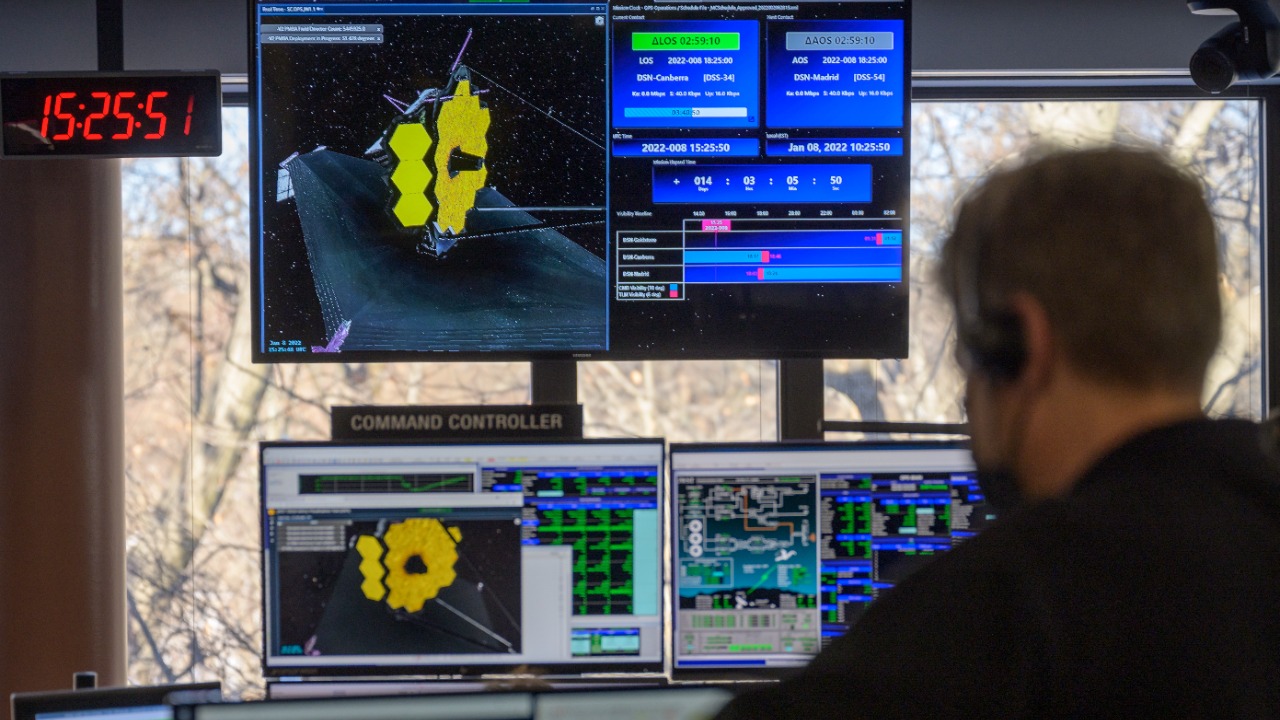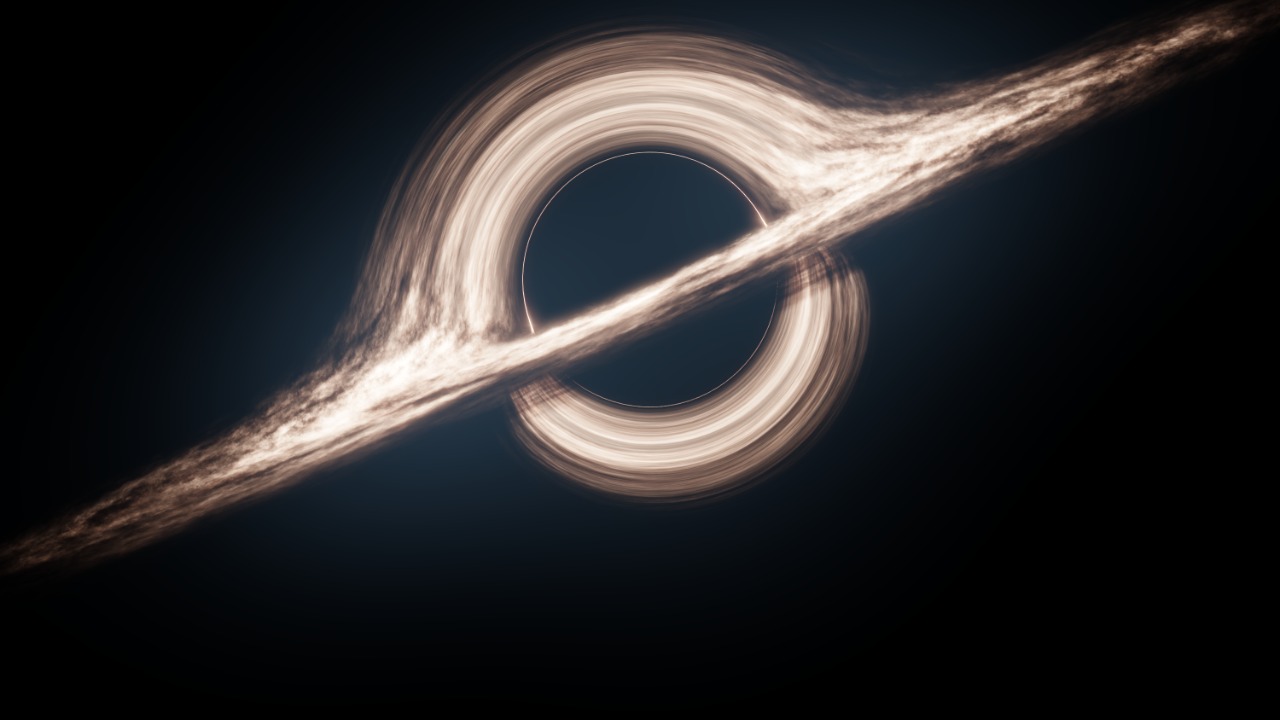
In the vast cosmos, black holes are often perceived as cosmic vacuum cleaners, consuming everything in their path. However, recent scientific theories suggest that the environment surrounding these enigmatic entities might host habitable zones. The intriguing possibility of life thriving near black holes and the potential technological advancements that could make these extreme regions of space more accessible are topics of growing interest.
The Science Behind Black Hole Habitats

Gravitational Forces and Stable Orbits
The intense gravitational pull exerted by black holes is a fundamental aspect that could contribute to the formation of stable orbits for planets. These orbits, known as ‘habitable zones,’ are regions where a planet could maintain liquid water on its surface, a critical ingredient for life as we know it. The gravitational forces around black holes are so strong that they can create a stable orbit for a planet, even at a considerable distance. This stability is essential because it allows a planet to maintain conditions conducive to life over long periods.
Interestingly, the concept of a habitable zone around a black hole is not purely theoretical. In recent years, scientists have developed new models and simulations to understand how these zones could exist. These models suggest that if a planet were to orbit a black hole at the right distance, it could experience a stable climate suitable for sustaining life. This opens up the possibility of finding habitable planets in regions of space previously thought to be too hostile.
Accretion Disks as Energy Sources
The accretion disks surrounding black holes are another critical factor in potentially supporting life. These disks are formed by gas and dust spiraling into the black hole, emitting substantial radiation in the process. This radiation can serve as an energy source for planets within the habitable zone, much like how our Sun provides energy to Earth. The radiation emitted from accretion disks could be harnessed by life forms, providing the necessary energy for biological processes.
While the radiation from accretion disks is intense, it’s important to note that not all of it is harmful. In fact, certain wavelengths of radiation could be beneficial, supporting photosynthesis-like processes in alien life forms. The potential for life to adapt and thrive in these extreme conditions is an exciting area of research, with scientists exploring how organisms might evolve to harness this energy efficiently.
Tidal Heating and Surface Conditions
Tidal forces, resulting from the gravitational interaction between a planet and its black hole, play a significant role in heating planetary surfaces. This process, known as tidal heating, can help maintain liquid water on a planet’s surface, a crucial element for life. As the planet orbits the black hole, the gravitational forces cause it to flex and stretch, generating heat through internal friction.
This heat can create a stable environment where life could potentially flourish. The presence of liquid water, combined with the energy from accretion disks, provides the necessary conditions for life to exist. Recent studies suggest that tidal heating could be sufficient to maintain liquid water even on planets located further from the black hole, expanding the potential habitable zone significantly.
Current Research and Theoretical Models

Simulation Studies
Recent advances in computer simulations have provided valuable insights into the conditions necessary for a planet to maintain habitability near a black hole. These simulations explore various scenarios, including different planet sizes, orbits, and distances from the black hole. By analyzing these variables, scientists can predict the likelihood of a planet sustaining life.
One such study, detailed in Technology Review, examines the potential for habitable planets orbiting supermassive black holes. These simulations reveal that under certain conditions, a planet could maintain a stable climate and support life, even in the harsh environment near a black hole.
Astrophysical Observations
In addition to simulation studies, astrophysical observations have also provided evidence supporting the existence of potentially habitable zones around black holes. Telescopes and space observatories have detected planets orbiting distant black holes, and some of these planets exhibit characteristics that suggest the possibility of life.
For instance, the Space.com reported on recent discoveries indicating that certain planets in the vicinity of black holes have the potential to host life. These observations are crucial in validating theoretical models and guiding future research efforts in the search for habitable planets.
The Role of Supermassive Black Holes
Supermassive black holes, found at the centers of galaxies, present unique opportunities for life-supporting environments. Due to their immense size, these black holes have larger habitable zones, increasing the likelihood of finding planets with the right conditions for life.
Moreover, the gravitational forces exerted by supermassive black holes are more stable over vast distances, allowing for potentially habitable planets to exist further away. This stability is crucial for maintaining conditions conducive to life over extended periods, making supermassive black holes an intriguing area of study in the search for extraterrestrial life.
Technological Advancements for Exploration

Spacecraft Design and Propulsion
Exploring the environments around black holes presents significant technological challenges. To study these regions up close, advancements in spacecraft design and propulsion systems are essential. Engineers are working on innovative propulsion technologies, such as ion propulsion and nuclear thermal propulsion, to enable spacecraft to reach distant black holes efficiently.
These advancements are critical for conducting detailed studies of black hole environments and gathering data that could lead to groundbreaking discoveries. By improving propulsion systems, scientists hope to send probes to black hole regions, paving the way for future exploration missions and potentially even human colonization.
Radiation Shielding
Radiation shielding is another crucial aspect of exploring black hole environments. The intense radiation emitted by accretion disks and cosmic rays poses significant risks to both astronauts and equipment. To address this challenge, researchers are developing advanced materials and technologies designed to protect against radiation exposure.
These innovations include the use of lightweight, flexible materials that can absorb or deflect harmful radiation, ensuring the safety of both mission personnel and spacecraft. By enhancing radiation shielding capabilities, scientists aim to make black hole exploration more feasible and reduce the risks associated with these extreme environments.
Communication and Data Transmission
Maintaining communication with probes or colonies in black hole environments presents unique challenges. The vast distances and intense gravitational forces can interfere with signal transmission, making it difficult to send and receive data. To overcome these obstacles, researchers are exploring new technologies and strategies to enhance communication capabilities.
These include the development of advanced communication satellites and data relay networks capable of transmitting signals over long distances. By improving data transmission methods, scientists hope to maintain reliable communication with spacecraft and colonies, ensuring the success of future exploration missions.
Potential Benefits and Risks of Black Hole Habitats

New Frontiers for Human Colonization
The possibility of establishing habitats near black holes offers exciting prospects for human colonization. These regions could serve as new frontiers for humanity, expanding our reach into the cosmos and providing opportunities for exploration and discovery. By harnessing the energy from accretion disks and utilizing tidal heating, black hole zones could support life and offer a unique environment for human settlement.
However, the challenges of colonizing black hole regions are significant. The extreme conditions and potential risks associated with these environments require careful planning and consideration. Nonetheless, the prospect of black hole colonization represents a bold step forward in humanity’s quest to explore and inhabit new worlds.
Scientific Discoveries and Innovations
Exploring black hole habitats presents numerous opportunities for scientific discoveries and technological innovations. By studying these regions, scientists can gain valuable insights into the nature of black holes and the conditions necessary for life in extreme environments. These discoveries could lead to breakthroughs in our understanding of the universe and the potential for life beyond Earth.
Additionally, the technologies developed for black hole exploration, such as advanced propulsion systems and radiation shielding, could have applications in other areas of space exploration and terrestrial industries. The potential for innovation and discovery makes black hole habitats an exciting area of research with far-reaching implications.
Ethical and Safety Concerns
Despite the potential benefits of black hole habitats, there are also ethical considerations and safety risks to address. Establishing habitats near black holes could impact existing cosmic ecosystems, raising questions about the ethical implications of human colonization. Furthermore, the safety risks associated with these environments, including intense radiation and gravitational forces, require careful consideration to ensure the well-being of future colonists.
Addressing these concerns is crucial for the responsible exploration and colonization of black hole regions. By considering the ethical and safety implications, scientists and policymakers can work together to develop strategies that minimize risks and ensure the sustainable exploration of these extreme environments.
Black Holes in Popular Culture and Public Perception

Representation in Science Fiction
Black holes have long been a popular subject in science fiction, capturing the imagination of writers and audiences alike. Films and books often depict black holes as mysterious and dangerous entities, fueling public interest and fascination. These portrayals have contributed to the perception of black holes as enigmatic and powerful, shaping our understanding of these cosmic phenomena.
While science fiction often takes creative liberties, it also plays a role in inspiring scientific inquiry and exploration. By depicting black holes as potential habitats or gateways to other worlds, science fiction encourages us to consider the possibilities of life beyond Earth and the potential for human exploration of the cosmos.
Public Fascination and Misconceptions
The public’s fascination with black holes is undeniable, yet it often comes with misconceptions fueled by sensationalized media coverage. Black holes are frequently portrayed as destructive forces, leading to misunderstandings about their nature and potential. However, as scientific research continues to uncover new insights into black holes, public perception is gradually shifting towards a more nuanced understanding.
Educational initiatives and outreach programs play a crucial role in demystifying black holes and addressing common misconceptions. By providing accurate and accessible information, these programs help to foster a deeper understanding of black holes and their potential as habitable zones.
The Role of Education and Outreach
Education and outreach are essential in promoting awareness and understanding of black holes and their potential as habitable zones. By engaging the public through educational programs, workshops, and lectures, scientists can share their knowledge and inspire future generations of researchers and explorers.
These efforts are vital in cultivating a society that values scientific inquiry and exploration, encouraging curiosity and innovation. By promoting education and outreach, we can continue to expand our understanding of black holes and their role in the cosmos, unlocking new possibilities for exploration and discovery.